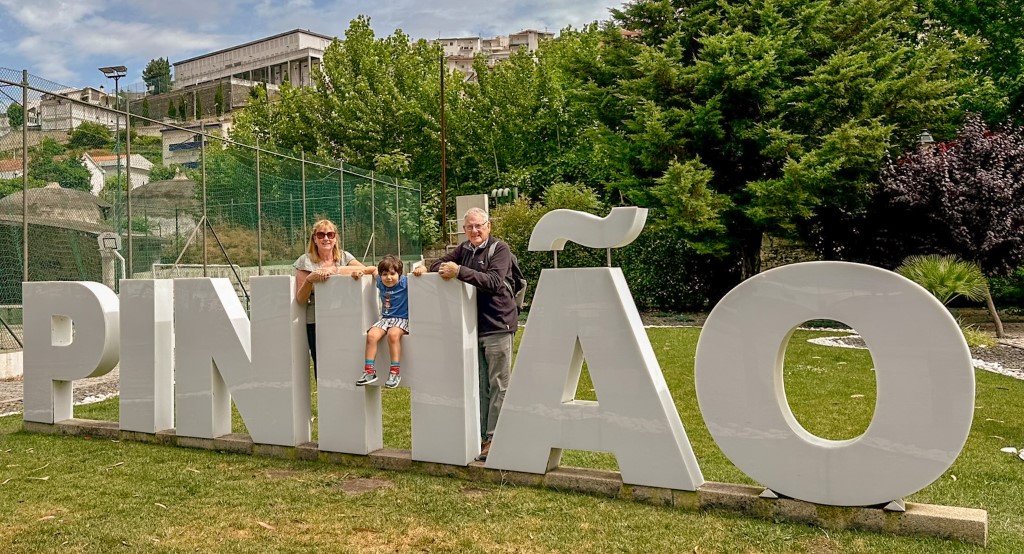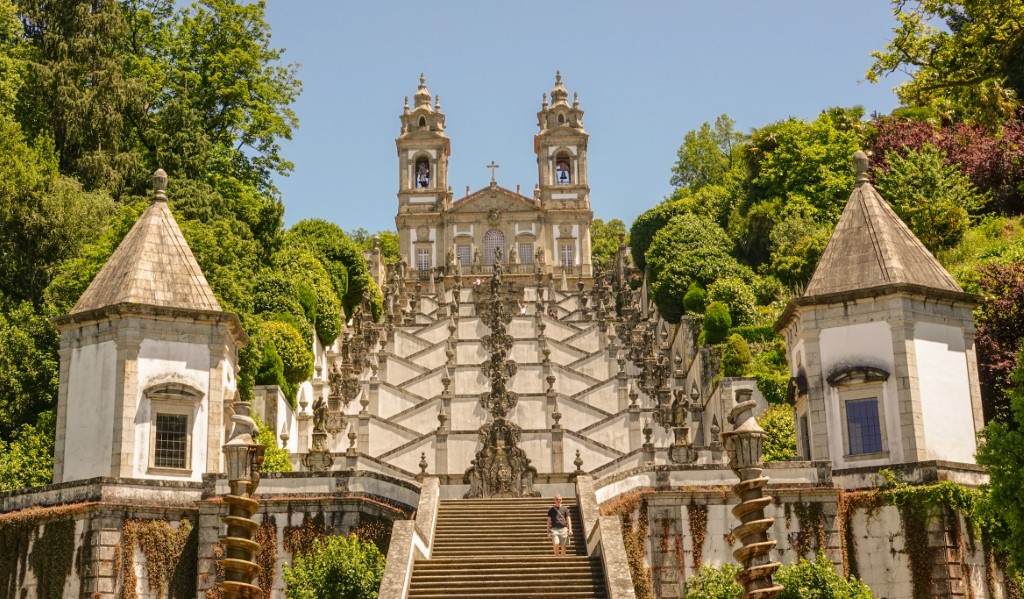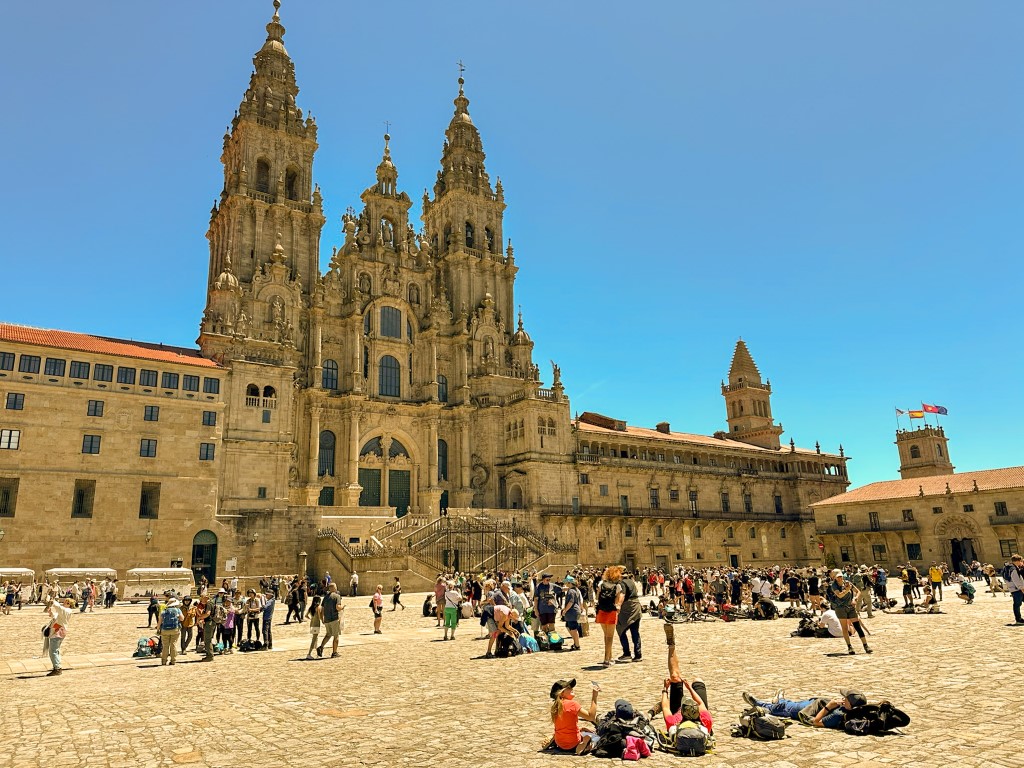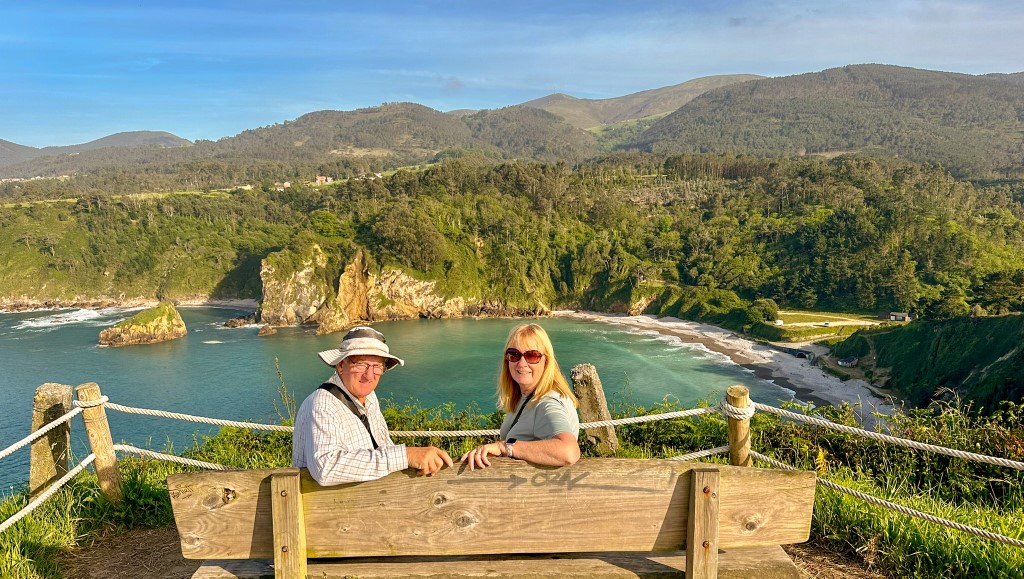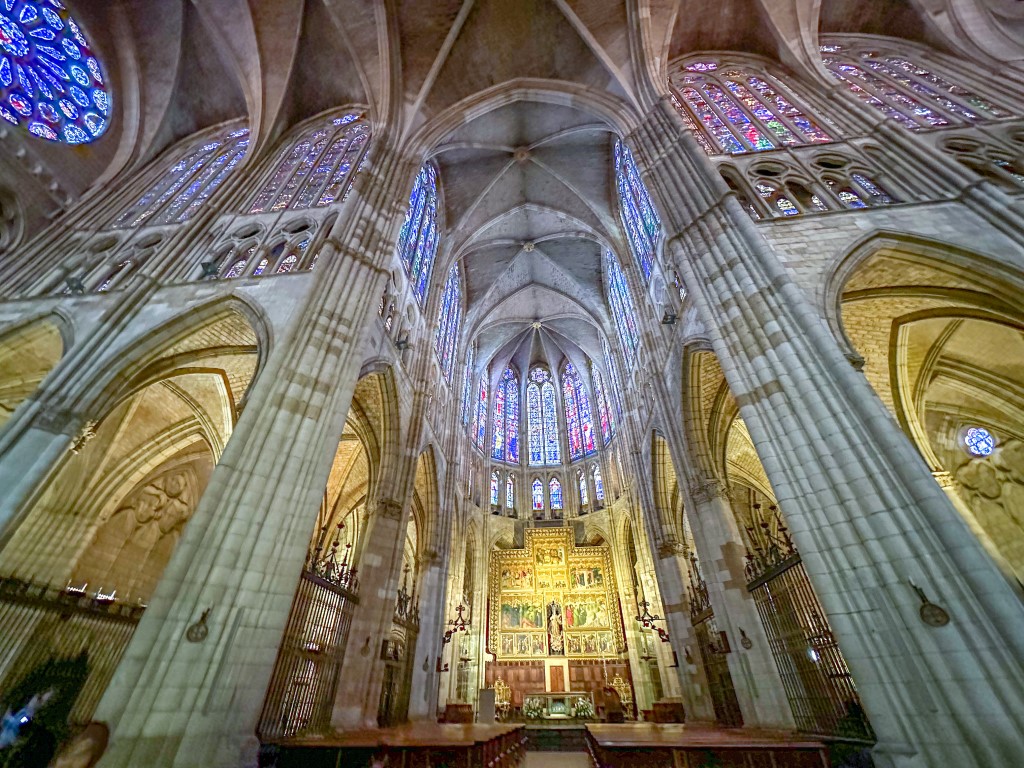Our afternoon train left us one last morning to explore Porto and we decided we would check out the historic Mercado do Bolhão that we had seen briefly on a tuk tuk tour a few days ago.
This market was established in 1914 and occupies an entire block of the Baixa district. It was in danger of falling into disrepair in 2018 but plans for its restoration were devised and after four years and four months it opened again in late 2023.

It is an astonishing place to visit both for the local and tourist with all of the food stalls under cover in a bright and airy modern space with many eating spaces and further restaurants on the upper floor.
I’m sure any food you can think of is available here and displayed to perfection!



We had a light lunch and a glass of wine (just because you can) and then loaded up on some snacks for the train.
Trusty Pedro was waiting outside São Bento station with our luggage and it wasn’t long before we were settled onto the train for the journey to Pinhão.
The trip takes a little over two hours, the first half pretty unremarkable but once you reach the river it is easy to see why this is classed as one of the most scenic train trips in Europe. The train descends to river level (often only a few feet from it) and runs along the valley with endless terraced vines clinging to the rocky hillsides above.

For us though, the best of the trip was arriving into Pinhão and being met by our dear friend Inês.
Inês had come to Australia as part of her journey in winemaking and stayed with us for the vintage of 2017 and we had then caught up with her and her family in France in 2019. We had been planning a visit in 2020 but of course the pandemic had foiled that so we were really looking forward to seeing our “Portuguese daughter” and especially in her own territory.
After hugs and kisses she hoisted my very heavy suitcase into her car and we were on our way up the hill to our beautiful accommodation Casa do Visconde de Chanceleiros.
Inês had organised for us to have dinner with the rest of her family at her good friend Gi’s restaurant, VelaDouro. This turned out to be a fun evening with lots of good food, wine and especially good company!

Over the next few days we were able to experience the ‘classic ambience, modern comforts and friendly hospitality’ that this beautiful 18th Century manor house offers as well as getting to know its lovely staff and local ‘personalities.’



The next day we felt very honoured to have a private tour of the nearby Quinta da Formigosa winery, where Inês is the winemaker, which then culminated in a sophisticated paired wine and chocolate tasting.





It was VERY hot and a significant storm was expected in the evening so we shelved plans for dinner at Inês’s home and decided to eat in our on site restaurant which turned out to be delicious. The storm hit after dinner, not with the ferocity that had been expected but definitely cleared the air and left us with gray skies and cooler conditions the next day.

One of the most popular experiences in Pinhão is a scenic boat trip along the Douro in a traditional rabelo boat and Inês and her son Benjamin met us at the location from where several boat companies depart.
Benjamin had lots of fun driving the boat as we admired endless terraced vineyards on either side of the Douro.
We were going back to Inês’s home for lunch and we stopped at the local butcher to purchase some cold cuts on the way there…
What an experience that was! Not only were we offered enough samples of meat AND cheese that we hardly needed lunch afterwards but also sampled some white port kept on the counter in small vat.
The butcher was a very friendly jovial guy, just as butchers should be 😉

Inês and her family live a short drive (and I’m glad she was driving…) away from Pinhão in a stunning location amongst more vineyards. We had a very enjoyable lunch, caught up with the rest of the family and met the new puppy, ‘T. Rex.’
Leaving Pinhão the next day we had time before our train left to check out the beautiful ceramic tiles that Pinhão station is also famous for.
There are 24 panels that cover almost all the walls of the main building and represent the various stages of Port wine production, from the grape harvest to the transport in rabelo boats by the Douro River to the cellars in Vila Nova de Gaia.



We were disappointed to find that the bistro above the station would not be open until after our train departed so at the last minute we raced across the road to grab whatever we could from whatever was open on a Sunday morning. We had just over two hours on the regional train and then a VERY tight connection in Porto for our onward journey to Lisbon which we wouldn’t reach until after dinner time so it could be a long time between snacks…
Sitting back and enjoying the scenery along the Douro I decided to have lunch but after one mouthful which tasted terrible, Russell pointed out the mould growing on it and we realised we could be quite hungry by the time we reached Lisbon 😁

I messaged Inês to see if she knew whether our intercity train would have a cafe car and she immediately replied with a plan. Her mother and auntie live in Aveiro and the train stops there, (for about three minutes!) so she would have her auntie meet us on the platform and transfer lunch.
I did protest and assure her we would be fine but apparently her mum protested more and insisted on helping us out.
Sure enough, at Aveiro there was her auntie on the platform (identifiable ‘in the green dress’) who handed over a huge white bag packed with local delicacies including a packet of the Ovos Moles de Aveiro which we had been wanting to try.
We arrived relaxed and replete and I cannot thank Inês and her family enough for their extremely generous Portuguese hospitality.
It started when I was just planning the trip – asking for information about places to go, how to navigate the toll system, buying a toll card etc. etc. – and extended to providing a taxi service in Pinhão and feeding us both on and off the train! Thanks so much guys ❤
Tomorrow we become reacquainted with Lisbon and reunited with Zoe.

